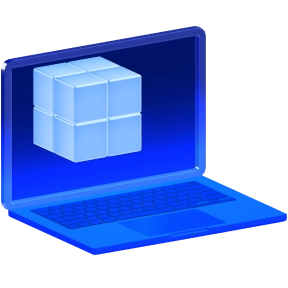Decentralized Blockchain Bridges
Discover how blockchain bridges enable seamless connections between networks, playing a critical role in the interoperability of blockchain networks.

What Are Decentralized Blockchain Bridges?
Decentralized blockchain bridges, also referred to as cross-chain bridges, are protocols designed to securely connect different blockchains, enabling the seamless transfer of assets, tokens, NFTs, and data between networks. By operating without the need for centralized intermediaries, these bridges maintain security and trust through decentralized mechanisms, such as boasting a diverse set of node operators.
As the number of blockchains continues to grow, decentralized bridges have become a critical component for ensuring that ecosystems are interconnected. They enable networks to deliver seamless user experiences and unlock greater utility by facilitating interoperability.
How Do Decentralized Bridges Work?

Asset or Message Initiation
A transaction is initiated on the source blockchain, either by locking tokens in a smart contract, sending a message, or triggering an event. This can involve transferring tokens, data, or other on-chain resources.

Verification and Validation
A decentralized network of validators, relayers, or oracles monitors the source chain for the initiated event. The validators verify the event (e.g., token lock-up or a specific transaction) and communicate this information across chains.

Message or Asset Relaying
The validated event or message is transmitted to the destination blockchain. Depending on the protocol, this step might involve:
- Minting or unlocking tokens (for token bridges).
- Direct state communication (e.g., sending instructions to a smart contract on the destination chain).

Execution on the Destination Chain
Once the event is validated, the corresponding action is executed on the destination blockchain. This could involve minting equivalent tokens, updating state, or triggering a specific function in a smart contract.

Reverse Process (if needed)
When assets or data are returned to the original chain, the process is reversed. For example, tokens on the destination chain are burned, and the locked tokens on the source chain are released.
Key Features of Decentralized Blockchain Bridges
Interoperability
Connect diverse blockchains to enable seamless transfer of assets and data.
Security
Leverage decentralized validators and smart contracts to ensure safe and trustless transactions.
Scalability
Handle high transaction volumes efficiently, enhancing liquidity and usability across chains.
While centralized bridges exist, they carry inherent risks due to single points of failure, which can compromise security and reliability. At Stakin, we exclusively support decentralized bridges, ensuring trustless and robust infrastructure for cross-chain communication.
Stakin’s Role in Blockchain Bridges Infrastructure
Stakin provides trusted infrastructure for decentralized blockchain bridges, ensuring seamless cross-chain connectivity with a focus on reliability, security, and scalability. With several years of operational experience in leading cross-chain protocols, we have enabled billions of dollars in cross-chain transactions across millions of transactions.
Below are the key ways we contribute to blockchain bridge ecosystems:
Reliable and Secure Infrastructure

Comprehensive services
Offering a broad range of services, including validators, oracles, and RPC nodes for bridge networks.

Certified infrastructure
ISO27001-certified systems ensuring high-security standards and operational excellence.

Always-on monitoring
24/7 monitoring and built-in redundancy to guarantee uptime and prevent disruptions.
Trusted Partner to Protocols

Early-stage support
Partnering with blockchain foundations during their testnet phases to build and refine bridge infrastructure from the ground up.

Long-term support
Working closely with foundations to ensure robust and reliable infrastructure from Testnet to Mainnet and beyond.
Key Partners and Supported Bridges

Get Started with Stakin’s Cross-Chain Services
Stakin offers the expertise and infrastructure to support decentralized bridges, ensuring seamless and secure cross-chain transfers. Whether you’re building a decentralized bridge or looking for a bridging protocol to partner with, Stakin can assist you.
Have more questions?
You can contact our team via social media or email:
For institutional investors, Stakin has partnered with leading custodian providers.
We can help you navigate your questions concerning staking, security, and risk management.
Subscribe to Stakin Newsletter
Stay informed about the latest trends in the blockchain ecosystem and gain expert insights from a leading Web3 operator.




